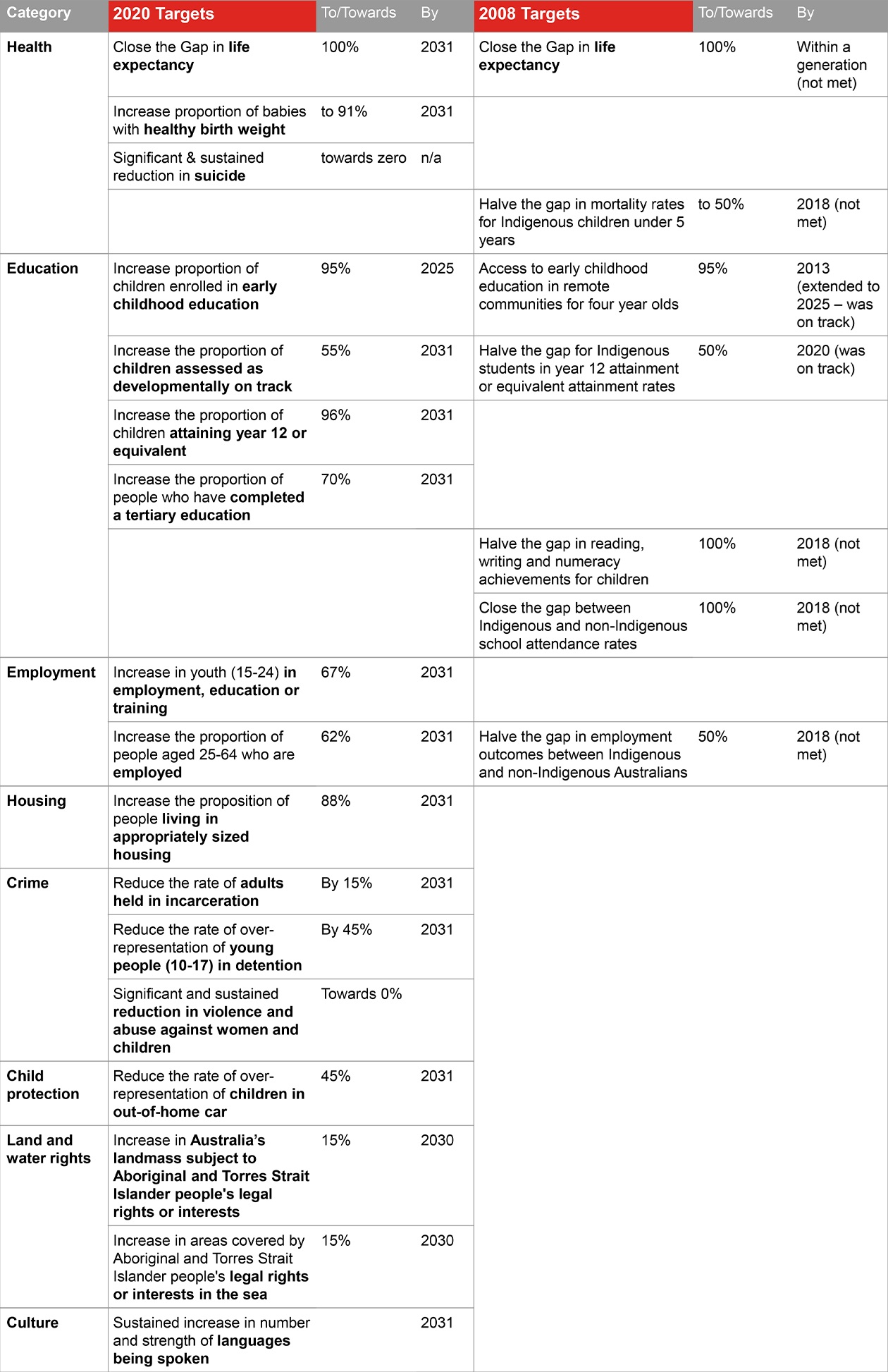
Publication
Australia’s new mandatory merger control regime
Mergers or acquisitions that meet certain turnover thresholds will shortly be required to be notified to the ACCC.


Australia | Publication | August 2020
This article was co-authored with Ingrid Olbrei (Graduate and RAP working group member), Lachlan Crosbie (Graduate), Donald Betts (Legal Services Executive and RAP working group member), Ioana Sabau (Legal Assistant) and Bevan Mailman (Principal, Jaramer Legal).
The National Agreement on Closing the Gap (National Agreement), released 30 July 2020, is the first partnership of its kind between Australian governments (Federal, State, and Local governments) and the Coalition of Aboriginal and Torres Strait Islander Peak Organisations (the Coalition of Peaks). The partnership is an alliance of over 50 Aboriginal and Torres Strait Islander community-controlled peak organisations, accounting for a variety of groups from housing and health to education and cultural groups. This partnership is a culmination of months of negotiations, which resulted in 16 socioeconomic targets and four priority reforms.
The primary objective of the National Agreement is to enable and facilitate cooperation within the partnership to ensure the best plan to eradicate and alleviate the inequality experienced by Aboriginal and Torres Strait Islander people is implemented. Importantly, the National Agreement is a product of broad consultation. The expertise and experience of the Coalition of Peaks will be central to the success of the National Agreement. The Coalition of Peaks will continue to hear the views and expertise of Elders, Traditional owners, Native Title holders and others as the National Agreement is implemented. The National Agreement has been identified as a turning point in Indigenous Affairs and the relationship between Indigenous people and governments. As Coalition of the Peaks lead convenor, Pat Turner, announced on 30 July 2020: “This places the Aboriginal and Torres Strait Islander community at the centre of Closing the Gap”.
The four priority reforms are:
Guided by these reform principles, the National Agreement has outlined 16 new targets, set out below. These targets are, however, not set in stone and the parties can agree to vary or add additional targets after the commencement of the Agreement. In response to criticism that some of the targets, in particular, the incarceration target, did not go far enough, Pat Turner has made it clear that the Coalition of Peaks want ‘parity across the board’ and will continue to advocate for this (Pat Turner on The Drum, 30 July 2020).


Publication
Mergers or acquisitions that meet certain turnover thresholds will shortly be required to be notified to the ACCC.

Publication
Privacy misconceptions are everywhere.

Publication
The Victorian Government has introduced significant changes to the Domestic Building Contracts Act 1995 (Vic) (DBC Act), affecting contract rules, builder obligations and consumer protections.
Subscribe and stay up to date with the latest legal news, information and events . . .
© Norton Rose Fulbright LLP 2025